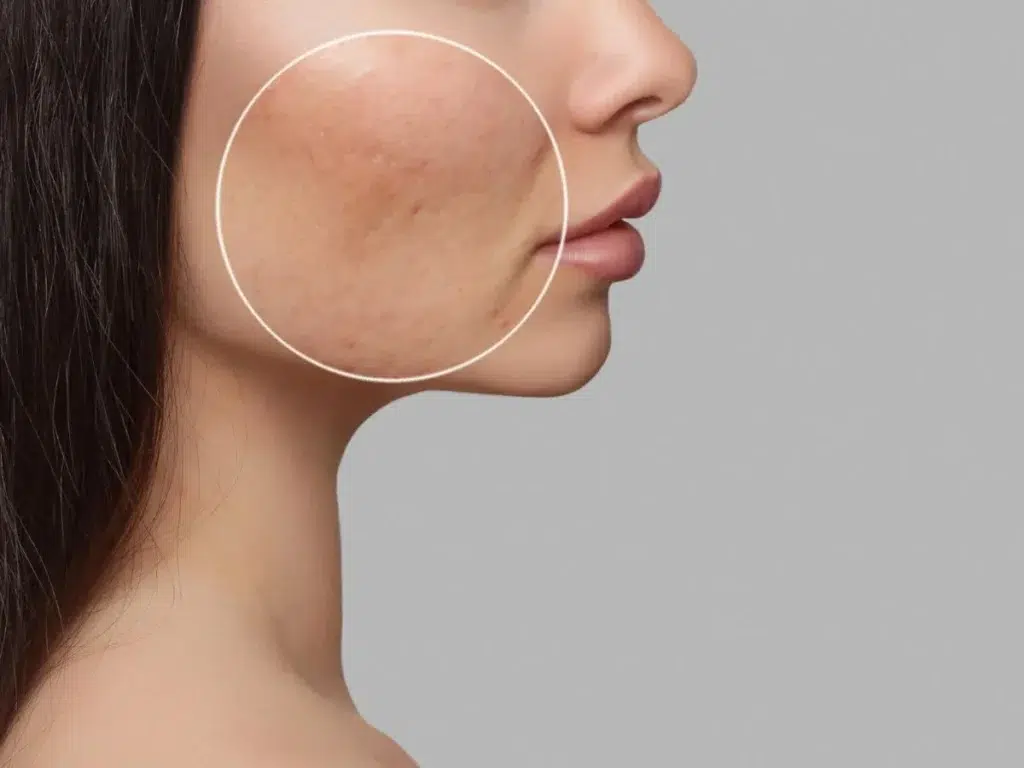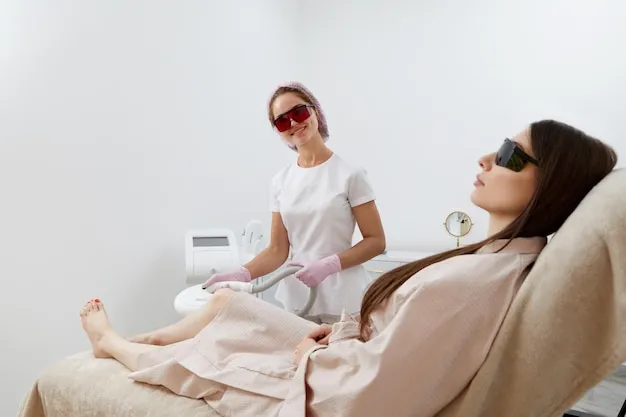Laser treatments enhance your skin, helping with concerns such as scars, wrinkles, and uneven skin tone. Opting for the correct laser treatment is vital to getting the results you want and keeping the process safe and effective.
Trustworthy sources, like Mirror Mirror Beauty Boutique, stress the need to know your skin type, to look into the laser treatments on offer, and to get advice from experts. With this essential information, you can make a better-informed choice when considering facial laser treatments.
Choosing the Best Laser Treatment for Your Face
- Understanding your skin type and concerns is the first step in selecting the appropriate facial laser treatment.
- Different laser treatments target specific issues, such as wrinkles, scars, and discoloration, so knowing your goals is essential.
- Consulting with a dermatologist can provide personalized advice and ensure the chosen laser treatment suits your skin’s needs.
- Laser treatments vary in intensity and recovery time, influencing your decision based on your lifestyle and availability for downtime.
- Comparing the costs and potential side effects of various laser treatments can help you make an informed decision that is compatible with your budget and health.
Understanding Laser Treatments and Their Benefits for Your Skin
Lasers have become a vital tool in dermatology, offering tailored treatments for various skin issues. A laser beam delivers concentrated laser energy to the affected area, aiding in the skin’s healing and renewal. Advanced laser experts can adjust the range of laser skin treatment to match the patient’s unique requirements.
The laser skin resurfacing procedure is renowned for improving skin health and appearance. Utilizing a family of lasers, specialists select a specific laser of choice based on the desired result. The type of laser used and its laser wavelength are determined by the targeted skin concern, from the finest lines to more pronounced wrinkles.
Laser skin resurfacing is a gentle approach that activates the skin’s self-repair by creating depots of laser energy. This encourages the body to produce collagen, leading to smoother, more taut, and clearer skin. The strength of laser resurfacing procedures is visible in the enhanced skin texture and tone, appealing to those who aim for a youthful and glowing look.
A versatile laser platform supports a range of treatments using various laser wavelengths to tackle particular problems. It offers solutions for scars, sun damage, or skin firming. The continual progress in this field affirms that the laser platform will remain essential in non-invasive cosmetic treatments.

Step 1: Know Your Skin Type and Concerns
- Identifying Skin Type: Understanding your skin type is essential as laser treatments may have different effects on each skin type.
- Pinpointing Skin Concerns: Laser treatments can address specific issues such as acne scars and other cosmetic concerns affecting the skin surface.
- Selecting Appropriate Laser Treatment: Choose a laser procedure that corresponds effectively with your particular skin concern and skin type to achieve the best results and improve the appearance of scars.
Step 2: Research Different Types of Laser Treatments
When considering laser skin rejuvenation, understanding the various technologies available is crucial:
- Ablative Lasers: These include CO2 and Erbium lasers, which remove outer layers of skin for noticeable changes but require more recovery time.
- Non-Ablative Lasers: These are less intense and boost collagen production without peeling the skin. Notable examples are the Fractional Erbium Laser and Pulsed-Dye Lasers, which are typically non-ablative and focus on improving skin tone and texture.
- Fractional Lasers: Fractora is a brand example. Unlike non-fractional lasers, fractional lasers cause small damage areas to stimulate healing.
- Non-Ablative Laser Treatments: These are ideal for those looking to tighten their skin, as they offer a balance between results and recovery.
- Specific Lasers for Specific Concerns: Lasers tailored to address distinct skin issues can be chosen, ensuring precision in treatment.
Selecting the appropriate laser options tailored to individual requirements can enhance outcomes without classifying the treatment as a surgical laser procedure.
Step 3: Consult with a Dermatologist or Skincare Specialist
Before you consult with a dermatologist, it’s beneficial to prepare. Here are steps to guide you:
- Preparing Questions for Your Consultation: Arm yourself with queries about the dermatologist’s expertise in laser resurfacing and potential laser skin treatment options.
- Diagnostic Process: A thorough examination of your skin will take place, and the specialist will suggest treatment plans best suited to your skin type.
- Decision-Making Process: With guidance from your laser resurfacing provider, you’ll explore treatments designed for your unique needs, which will assist you in making informed choices.
- Understanding What to Expect During Your Consultation: Knowing the consultation’s structure eases nerves, paving the way for clear communication between you and your provider and ensuring a mutual understanding of treatment expectations.
Step 4: Understand the Pre-Treatment Requirements
To prepare your skin for laser treatment and ensure optimal results:
- Minimize Sun Exposure: Avoiding sun exposure helps prevent premature aging and skin laxity, and enhances treatment effectiveness.
- Implement Lifestyle Changes and Precautions: Discontinue specific medications and supplements that increase skin sensitivity to light.
- Apply Numbing Cream: Use as directed by your healthcare provider to reduce discomfort during the procedure.
Following these guidelines will contribute to a safer procedure and improved skin rejuvenation.
Step 5: Educate Yourself on the Recovery Process and Post-Treatment Care
After completing a laser treatment, it’s essential to understand what to expect during the healing process:
- Immediate Aftercare: Vital for a smooth recovery, typically involves a laser resurfacing recovery time with a 2- to 3-week healing process.
- Discomfort: Some discomfort after laser resurfacing is common during the initial weeks.
- Long-term Skin Care and Maintenance: Crucial to preserving the results of your treatment and preventing scarring after laser treatments.
- Healing Process: Following care instructions diligently supports a successful healing process and minimizes the likelihood of scarring from laser resurfacing.
Step 6: Consider the Timing of the Treatment
When scheduling your laser treatment, the timing is essential for two main reasons:
- Planning Around Social Events or Sun Exposure: Ensure that no significant events are planned for a few weeks post-procedure to provide ample healing time without social obligations.
- Seasonal Considerations: Often, the best time for laser procedures is during what’s known as laser season, which is winter. This season is preferable for these reasons:
- A lower risk of sun exposure that could potentially damage sensitive, healing skin.
- Cooler temperatures may lead to a more comfortable recovery period.
Additional Advice for Choosing the Right Laser Treatment
When considering laser treatments, it is essential to:
- Read Reviews and Seek Recommendations: Gain perspectives from others’ experiences and satisfaction levels.
- Assess the Clinic’s or Practitioner’s Credentials: Verify qualifications and expertise through their online presence, such as a Blog or a previous blog post, to understand their proficiency, especially with laser treatment packages.
- Consider Non-Ablative Light and Laser Treatments: These offer a mild laser treatment option that typically involves a more comfortable recovery.
Precautions Before Undergoing Laser Treatment
Before you start laser treatments, it is essential to understand the process and its implications:
- Understanding Potential Risks and Side Effects: Be prepared for common issues like redness and irritation, while being cognizant of less common but serious complications such as scarring and infection.
- Knowing When Laser Treatments Are Not Advisable: Avoid laser procedures if you currently have skin infections or some types of acne or are on certain medications that could impede the healing process and compromise results.
- Preparing for a Single Laser Treatment: Before the treatment, a comprehensive evaluation of your skin type, medical history, and lifestyle is integral to mitigating risks and enhancing the success rate for laser patients.
Expected Outcome and When to See Results
Laser treatment for the face is designed to enhance your skin’s appearance. Here’s what to expect regarding outcomes and the timeline for seeing results:
- Initial Changes: Some changes are often visible within a few weeks post-treatment.
- Complete Healing and Final Results: The full healing process and ultimate results typically manifest over a few months. This period is dependent on individual skin conditions and the particular laser treatment used.
- Maintenance Treatments: Additional treatments may be required to sustain or enhance the outcome, and they should be coordinated with your skin’s natural regeneration cycle.
- Ongoing Consultation: Regular communication with your skincare provider is essential to determine the need for further treatments.
Picking the best laser treatment for your face is an important choice. It’s all about knowing your skin and the choices out there. Getting advice from experts means you get tips that fit your skin’s needs.

At Mirror Mirror Beauty Boutique in Houston, TX, we focus on getting to know our patients for the long haul. We offer tailored services in a modern clinic. We work closely with a leading cosmetic surgeon, Dr. Paul Vitenas, to help you find the right laser treatment. Please schedule a consultation with us to talk about your skin needs.
FAQs About Facial Laser Treatment
Yes, certain types of laser treatments are specifically designed to target and diminish the appearance of age spots and brown spots. These treatments focus on pigmentation to provide long-lasting results, helping you achieve clearer and more uniform skin as part of your beauty goals.
Laser treatments can be more effective for deep wrinkles compared to chemical peels. Lasers use focused energy to precisely target and treat deeper layers of skin, promoting collagen production and providing a more invasive procedure that often leads to better, long-lasting results for aesthetic concerns like deep wrinkles.
Yes, specific laser treatments are designed to target and minimize the appearance of blood vessels on the face. These treatments use a type of laser that can selectively target the pigment in blood vessels, making them less visible without affecting the surrounding skin. This can be an effective treatment to enhance your facial aesthetics.
Non-ablative lasers are generally considered less invasive and more painless procedures than ablative lasers. They do not remove any skin layers but instead heat the underlying skin tissue to stimulate collagen growth. This results in a shorter recovery time and less discomfort while still being an effective treatment option for various cosmetic procedures.
